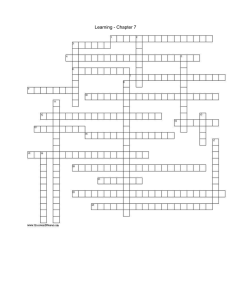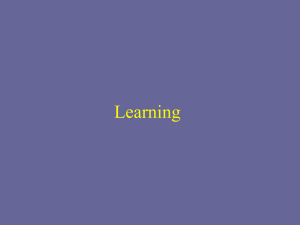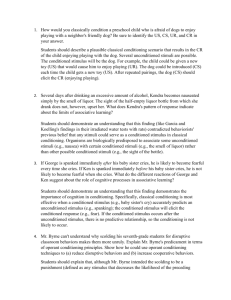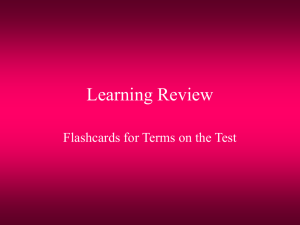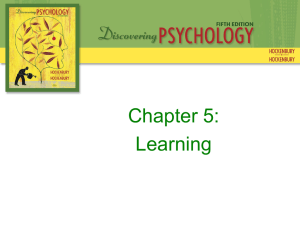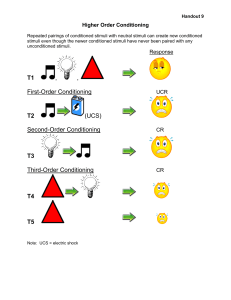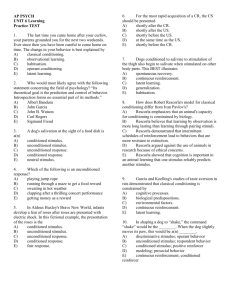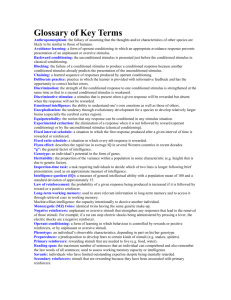Practice Test Questions Classical and Operant Conditioning Notes
advertisement
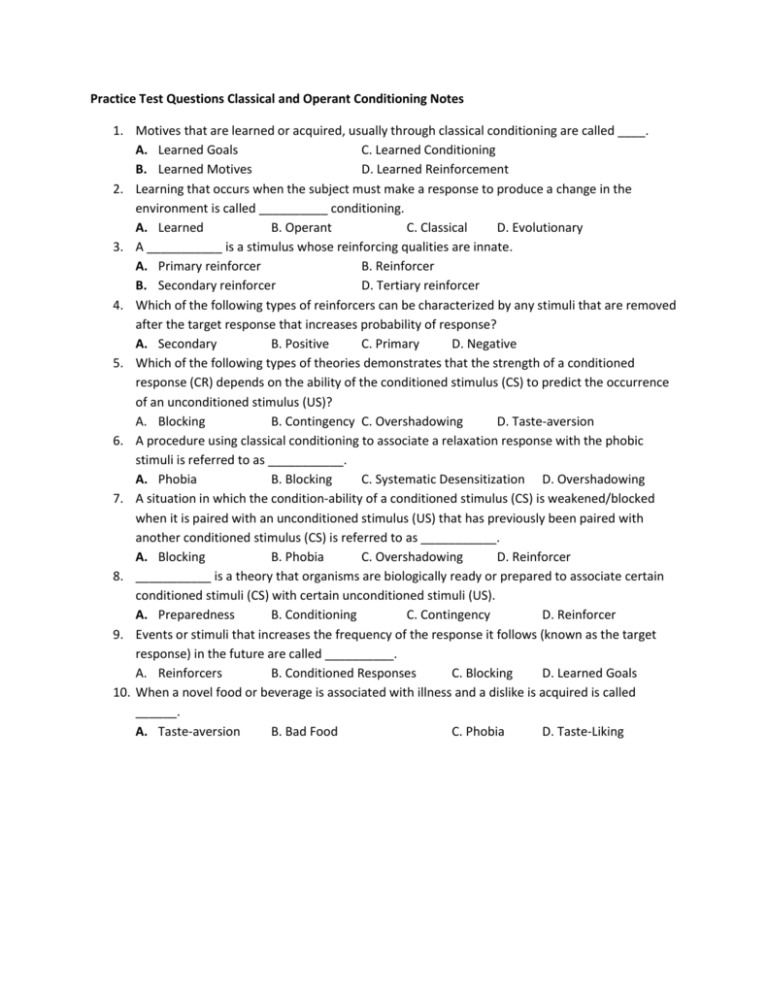
Practice Test Questions Classical and Operant Conditioning Notes 1. Motives that are learned or acquired, usually through classical conditioning are called ____. A. Learned Goals C. Learned Conditioning B. Learned Motives D. Learned Reinforcement 2. Learning that occurs when the subject must make a response to produce a change in the environment is called __________ conditioning. A. Learned B. Operant C. Classical D. Evolutionary 3. A ___________ is a stimulus whose reinforcing qualities are innate. A. Primary reinforcer B. Reinforcer B. Secondary reinforcer D. Tertiary reinforcer 4. Which of the following types of reinforcers can be characterized by any stimuli that are removed after the target response that increases probability of response? A. Secondary B. Positive C. Primary D. Negative 5. Which of the following types of theories demonstrates that the strength of a conditioned response (CR) depends on the ability of the conditioned stimulus (CS) to predict the occurrence of an unconditioned stimulus (US)? A. Blocking B. Contingency C. Overshadowing D. Taste-aversion 6. A procedure using classical conditioning to associate a relaxation response with the phobic stimuli is referred to as ___________. A. Phobia B. Blocking C. Systematic Desensitization D. Overshadowing 7. A situation in which the condition-ability of a conditioned stimulus (CS) is weakened/blocked when it is paired with an unconditioned stimulus (US) that has previously been paired with another conditioned stimulus (CS) is referred to as ___________. A. Blocking B. Phobia C. Overshadowing D. Reinforcer 8. ___________ is a theory that organisms are biologically ready or prepared to associate certain conditioned stimuli (CS) with certain unconditioned stimuli (US). A. Preparedness B. Conditioning C. Contingency D. Reinforcer 9. Events or stimuli that increases the frequency of the response it follows (known as the target response) in the future are called __________. A. Reinforcers B. Conditioned Responses C. Blocking D. Learned Goals 10. When a novel food or beverage is associated with illness and a dislike is acquired is called ______. A. Taste-aversion B. Bad Food C. Phobia D. Taste-Liking Answer Key 1. 2. 3. 4. 5. 6. 7. 8. 9. 10. B B A D B C A A A A
